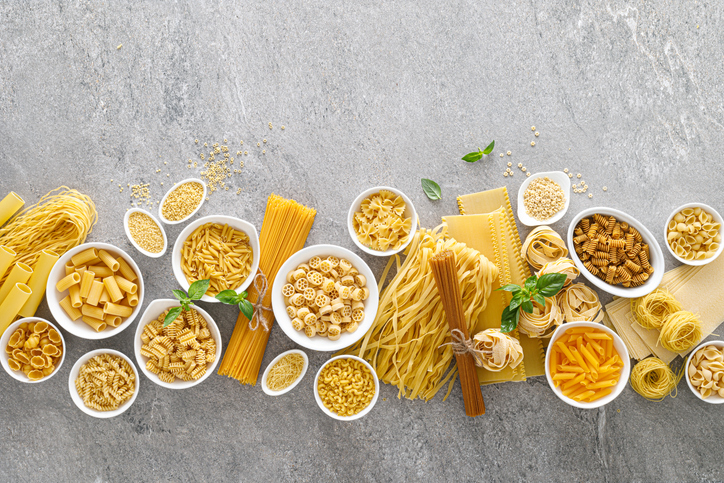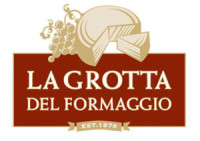How Do I Choose A Pasta?
Choosing pasta can be a nuanced decision, and factors like origin, ingredients, production methods, and finally the cuts to choose can influence the taste and quality, and presentation of your dish.

At La Grotta Del Fomaggio, we carry 4 major Brands of pasta, and all are Italian. The Brands we carry are Garofalo, De Cecco, Rustichealla and Zaccagni. We offer a wide variety of cuts for the home chef as well as the professional chef. Our offerings are suitable for stores and restaurants that are looking for a better or best option in their pasta selections. Garofalo and De Cecco give you better and Rustichella and Zaccagni the best Italy has to offer. The Zaccagni Brand is the only one that uses ONLY Italian wheat.
Here are some considerations to help you pick the right pasta for your customers (retailer or restaurant) and you and your family…
Country of Origin:
- Italian Pasta: Italy is renowned for its pasta, and many argue that Italian pasta made with durum wheat semolina has a distinct flavor and texture that can not be matched (as you can see from our offerings – we think that too… ) Traditional methods and high-quality ingredients are often associated with Italian pasta.
- Canadian or American Pasta: While Italy is a major pasta producer, other countries like Canada and the United States also produce high-quality pasta. Local options may be more readily available and could offer good quality at perhaps a more economical price point.
While Italy is known for its pasta, it’s important to note that the source of wheat used in Italian pasta can vary. Italy does produce its own wheat, including durum wheat, which is commonly used for pasta making. However, due to factors such as demand, supply, and quality considerations, Italian pasta manufacturers might also use wheat sourced from other countries, including Canada. Only our Zaccagni brand uses 100% Italian wheat from Abruzzo.
Canada is a major exporter of durum wheat, known for its high protein content and excellent pasta-making qualities. Italian pasta makers often import Canadian durum wheat to ensure they have a consistent and high-quality supply. This doesn’t diminish the authenticity or quality of the pasta; it’s more about accessing the best raw materials for the production process.
In essence, while some Italian pasta may contain Canadian wheat, the key factor is often the traditional pasta-making techniques and the expertise of Italian pasta manufacturers. The emphasis is on using high-quality durum wheat semolina and adhering to time-tested methods, which contribute to the unique texture and flavor characteristics associated with Italian pasta. If the pasta is labeled as “made in Italy” or uses traditional methods, it’s likely to embody the qualities you associate with authentic Italian pasta, regardless of the origin of the wheat.
Wheat Source:
What is the wheat and why does it matter? Here are the distinctions between durum wheat and whole wheat and why durum wheat is often favoured, especially in traditional Italian pasta.
Durum Wheat:
- Characteristics: Durum wheat (Triticum durum) is a hard wheat variety known for its high protein content and gluten strength. The hardness of the grain allows for the creation of a coarser grind, resulting in semolina, a type of flour commonly used in pasta making.
- Pasta Quality: Durum wheat semolina contributes to the desirable al dente texture of pasta. The high protein content and gluten strength help the pasta maintain its structure during cooking, preventing it from becoming mushy.
- Color: Pasta made from durum wheat tends to have a bright yellow hue, contributing to its visual appeal.
Whole Wheat:
- Ingredients: Whole wheat pasta is made from flour that includes the entire wheat kernel, including the bran, germ, and endosperm. This results in a darker color and a nuttier flavor compared to pasta made from refined flour.
- Nutritional Benefits: Whole wheat pasta retains more nutrients and dietary fiber than pasta made from refined flour. It’s considered a healthier option due to its higher fiber content, which can aid digestion and promote a feeling of fullness.
- Texture and Flavor: Whole wheat pasta has a chewier texture and a more robust flavor compared to pasta made from durum wheat semolina. Some people enjoy the hearty and nutty taste, while others may find it an acquired preference.
Why Durum Wheat in Italian Pasta: Traditional Italian pasta, especially in regions renowned for pasta production, often rely on durum wheat for several reasons:
- Texture: Durum wheat’s characteristics contribute to the desired firmness and texture associated with high-quality pasta.
- Cooking Integrity: Pasta made from durum wheat semolina maintains its structure during cooking, allowing it to hold up well with various sauces.
- Culinary Tradition: The use of durum wheat in pasta making is deeply ingrained in Italian culinary traditions, and the specific qualities of this wheat variety are well-suited to pasta production.
While durum wheat is often favoured for traditional Italian pasta, whole wheat pasta offers a different set of characteristics and nutritional benefits. The choice between them depends on personal preference, dietary considerations, and the specific dish you’re preparing.
Another characteristic in production that gets talked about in the pasta community is the difference between using brass dies versus steel dies.
The choice between brass and steel dies can impact the texture and quality of the pasta, and each material has its own set of characteristics.
Brass Dies:
- Characteristics: Brass dies are known for their durability and resistance to wear. They have a smooth surface but with a slight roughness that can impart a desirable texture to the pasta. The roughness helps the pasta hold onto sauces better.
- Benefits: Some pasta enthusiasts argue that brass dies provide a unique and superior texture to the pasta, enhancing the overall dining experience. The rougher surface allows sauces to cling to the pasta, creating a more flavourful bite.
Steel Dies:
- Characteristics: Steel dies are also durable and less expensive than brass. They can have a smoother surface compared to brass, and the pasta produced may be slightly less textured.
- Benefits: Steel dies are often chosen for their cost-effectiveness and longevity. While they may not provide the same level of surface roughness as brass, they are still capable of producing high-quality pasta.
Differences:
- Texture: Brass dies can contribute to a slightly rougher surface on the pasta, enhancing its ability to hold sauces. Steel dies may produce pasta with a smoother surface.
- Durability: Both brass and steel dies are durable, but brass is known for its resistance to wear over time. However, steel dies are more budget-friendly.
- Cost: Brass dies are generally more expensive than steel dies, which can influence the overall cost of the pasta.
In practice, the choice between brass and steel dies often depends on the pasta manufacturer’s preferences, the desired characteristics of the final product, and cost considerations. While some may argue that brass dies produce superior pasta, many high-quality pasta producers use steel dies without sacrificing quality. Ultimately, both materials can result in excellent pasta, and the overall quality also depends on other factors such as the type of wheat used, production methods, and the expertise of the pasta maker.
Cuts and Shapes:
In Italy, there is indeed a strong tradition of matching specific pasta shapes with particular sauces. While you won’t get kicked out of Italy for using the “wrong” pasta, adhering to these traditional pairings is considered a part of culinary etiquette. Each pasta shape is designed to enhance the eating experience by holding and complementing certain types of sauces. Here are some classic pairings:
Long and Thin Pasta:
- Examples: Spaghetti, Linguine, Fettuccine
- Ideal Sauces: Light, oil-based sauces like Aglio e Olio (garlic and oil), tomato-based sauces, clam sauces, or simple herb and butter sauces.
- Tips: Long, thin pasta is well-suited to sauces that can coat each strand evenly.
Short and Chunky Pasta:
- Examples: Penne, Rigatoni, Fusilli
- Ideal Sauces: Hearty and chunky sauces, such as Bolognese, meat sauces, creamy sauces, or sauces with small pieces of vegetables.
- Tips: The nooks and crannies in these pasta shapes help trap and hold the sauce.
Tubular Pasta:
- Examples: Ziti, Macaroni, Cannelloni
- Ideal Sauces: Thick and rich sauces like baked pasta dishes with cheese and tomato sauce or creamy cheese-based sauces for stuffed pasta like Cannelloni.
- Tips: Tubular shapes work well with sauces that can fill and cling to the inside.
Twisted or Ridged Pasta:
- Examples: Fusilli, Rotini, Gemelli
- Ideal Sauces: Sauces with chunky ingredients, pesto, or sauces with lots of herbs that can cling to the twists and turns.
- Tips: The ridges or twists help hold the sauce, creating a flavorful bite.
Stuffed Pasta:
- Examples: Ravioli, Tortellini, Agnolotti
- Ideal Sauces: Light butter and sage sauces, tomato-based sauces, or broth-based sauces for delicate stuffed pasta.
- Tips: Stuffed pasta is often flavorful on its own, so a simple sauce allows the filling to shine.
While these guidelines are traditional, it’s important to note that regional variations exist, and personal preferences play a significant role in pasta pairings. Italians themselves may have different opinions on the “correct” way to pair pasta and sauce. Feel free to experiment and find combinations that suit your taste. The most important aspect is enjoying the delicious harmony of flavors in your pasta dish.
It can surely appear daunting when choosing your pasta and the “right” pasta cuts. So many things to think about. Let us help you with that. We have been doing this for years and we have the experience and know how to help you create a Better / Best program for your store or restaurant.

+ There are no comments
Add yours